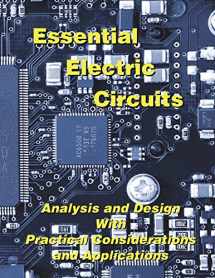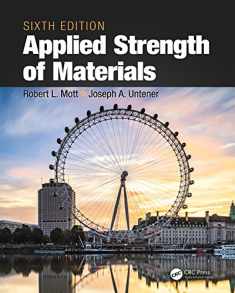
Essential Electric Circuits: Analysis and Design with Practical Considerations and Applications
Book details
Summary
Description
Essential Electric Circuits is the result of the author’s teaching of electric circuits courses for more than twenty years. Rather than simply try to replicate the material in established texts, this text takes a different approach, for several reasons.
First, this text recognizes that very few engineers need the breadth and depth found in traditional texts. In practice, circuit analysis and design has largely moved away from the focus on analysis and design of small circuits. Rather, real world circuit analysis and design focuses much more on the selection of integrated circuits and on the creation of circuits that interface integrated circuits to one another.
Second, this text recognizes that many analog circuits have been replaced by digital circuits in many applications. As a result, analog circuit design in a digital world focuses on analog signal conditioning and translation prior to conversion to digital, and also in the translation and conditioning of analog signals arising from digital signals.
Third, this text recognizes that modern computing tools have largely eliminated the need for being able to solve electric circuits by hand.
Fourth, this text recognizes that electric circuits can no longer be a central focus of the curriculum. There simply is not enough time available, given the need to adequately cover higher level concepts that are needed in the workplace.
Fifth, this text recognizes that textbooks have become outrageously priced.
Based on these observations, Essential Electric Circuits covers only the essential aspects of electric circuits. The fundamental aspects of DC, transient, and AC circuits are covered. Much of the excruciating detail found in traditional texts is absent. The philosophy for this is that students need to take the essential concepts with them in their careers, but they do not carry the excruciating detail with them, even if it is covered in circuits courses. And by excluding the excruciating detail, students will more likely retain the essential aspects they need.
To cite just one example among many, nodal analysis is covered, but mesh analysis is not. These analysis tools are seldom used in practice for hand calculations and because it is the analysis approach underlying most circuit analysis software. Nodal analysis is covered because it solves for voltages, not currents. Voltages are the predominant variable in most electric circuits. In digital circuits, the presence or absence of a voltage dictates logic states. In analog circuits, voltages contain the information that is manipulated. Op amps and filters are almost always used to process voltages.
Essential Electric Circuits takes a different approach in the way material is presented as well. Here presentation more closely resembles the conversational tone and content one uses in lectures. For many students this improves comprehension. Because students often struggle with algebraic manipulations, this text explicitly shows the steps involved in derivations. Intermediate circuits are also shown.
Traditional texts do not make value judgments. As a result, students naturally believe that everything is equally valuable, when it clearly is not. Because making value judgments is vital and common in the workplace, this text addresses the relative importance of topics.
Most importantly, Essential Electric Circuits addresses practical workplace topics. For example, practical component values, the effect of tolerances, circuit loading, and real models for resistors, capacitors and inductors are included. Moreover, this text covers vital practical topics that cannot be found elsewhere. Topics include bypass capacitors, oscilloscope probes, power dissipation in logic circuits, single supply op amp operation, and crosstalk mitigation using twisted pairs, differential signaling, and common mode chokes.


We would LOVE it if you could help us and other readers by reviewing the book
Book review





